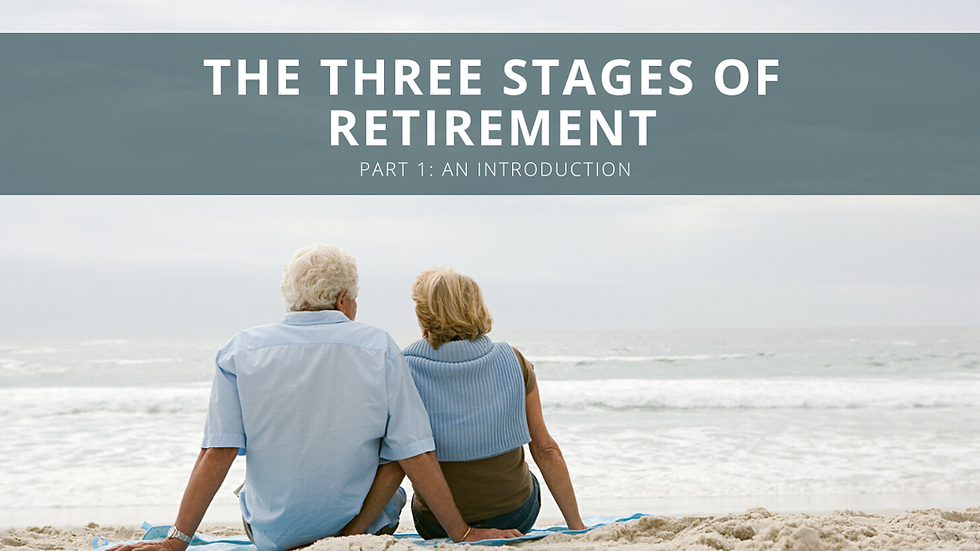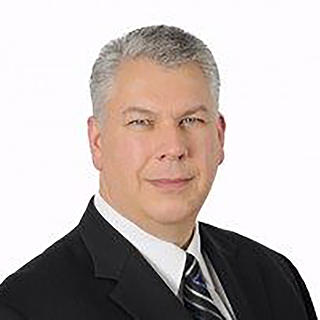The Three Stages of Retirement – An Introduction (Part 1)
- Darryl Smith
- Mar 2, 2020
- 3 min read

Aging is a natural part of life. Each of us will go through different stages at different times, but it’s important to be prepared for the later stages of life and plan well in advance. Throughout most of your adulthood, your income came from your hard work and your business if you owned one. With retirement, where will your income come from now? As we enter retirement, there are different phases we go through that I have broken down into three parts:
The active phase of retirement: This is when you have the full mental and physical capability to do what you want during your retirement.
The semi-active phase of retirement: During this stage, you begin to realize things are changing and now there are limitations to what can be done.
The passive phase of retirement: This is when you are no longer able to take care of yourself and will most likely need assistance.
When many of us think about retirement, we envision our active years, which is the easiest part to look forward to and plan for. However, it’s important to think long term and be prepared for the semi-active and passive phases of retirement as well. Although this can be emotionally difficult for many people, it needs to be done. Think about your property for example. As people get older and their children move out and start to have families of their own, people will often hold on to the larger home they had when raising their kids. As time progresses, they start to realize the larger home is only of benefit to accommodate family get-togethers and for holiday celebrations. They also start to consider the amount of time and money it takes to maintain the larger property and at this point, they will decide to downsize their home and most likely realize they have way too much stuff to move and how nobody wants their extra stuff. This process is what’s known as downshifting. This is a common and trending lifestyle for many who wish to ‘live simply’ and cut down on their material possessions to make retirement life easier which I help many of my clients do.
There is also what is known as divestment, which is the reduction of some type of asset for financial objectives. During their working lives, people gather assets they feel will benefit their financial well being during retirement, but many of these assets require hands-on management either physically or mentally. In the active stage of retirement, this is of no real concern as people like to keep busy. However, as you enter the semi-active phase, these assets become a burden as they may no longer have the mental or physical capacity to manage these assets and although the family may assist, it can also start to cause problems or disputes. These types of assets range from small businesses, investment real estate, large family homes, a cottage, boats, RV’s, collector cars & boats, antiques, and so on.
It’s crucial to have a plan for your assets in all three stages of retirement. By following along with the rest of this four-part series, we will explore in further detail each stage of retirement and how to plan for these three stages. You’ll discover how to plan your assets accordingly, how to better prepare you and your family in the event of your death and how you can best settle your assets and estate when the time comes. With my help, plan your financial future for the retirement you deserve. I’ll show you the benefits of liquidating your assets to make retirement living easier for you and how to properly settle your estate and plan your will effectively so your loved ones and beneficiaries have a smooth transition when receiving their inheritance. Contact me, Darryl Smith, at info@synergylife.ca to set an appointment and get started with your retirement plan today. And, be sure to review my guidebook: 10 Tips to Maximize Blue-Collar Wealth if you own a Blue-Collar business. With my knowledge and years of experience helping individuals and business owners plan their retirement, I can make retirement planning easy. You’ll see as soon as we meet, that it doesn’t have to be nearly as complicated as you might think.





Comments